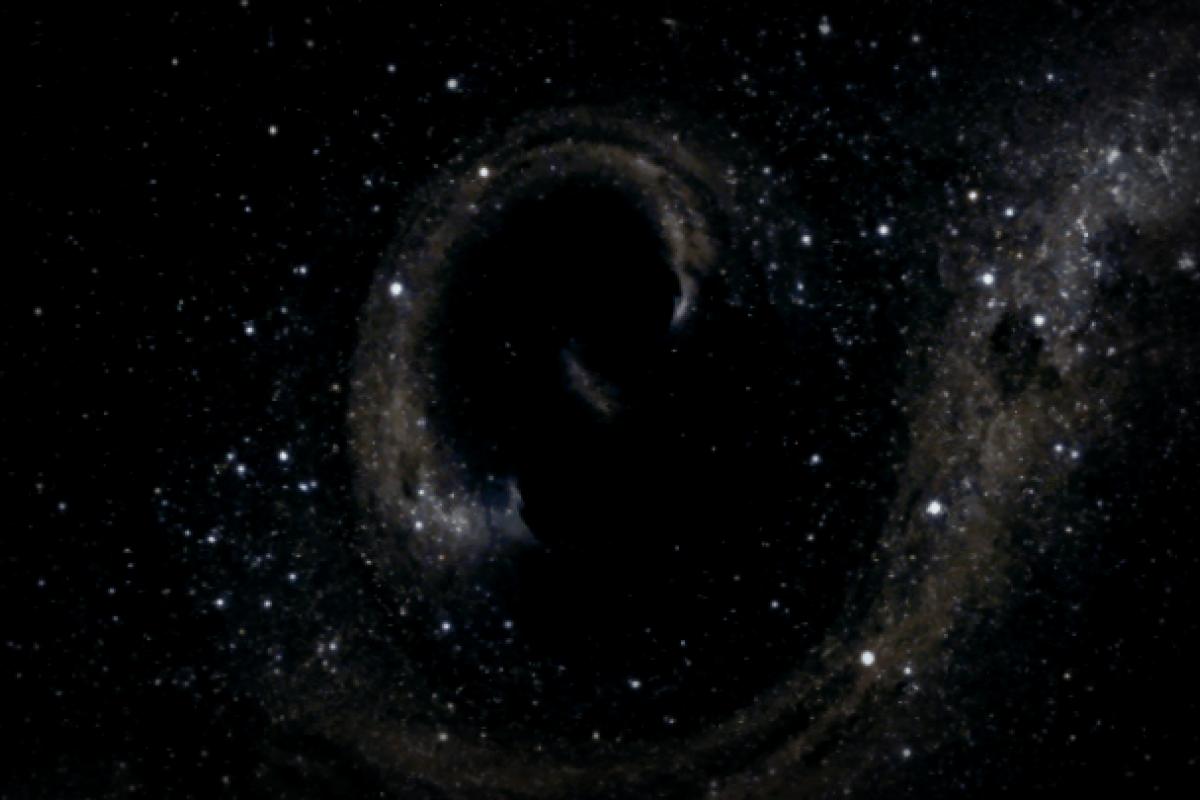For the first time ever, astronomers have actually measured the recoil speed from a mind-blowing collision between two black holes.
You know those ripples in space-time that Einstein talked about? They’re called gravitational waves, and we first proved they exist back in 2015. Then, in 2019, scientists picked up a gravitational wave from a dramatic merger of two black holes of very different sizes. This size difference caused the newly born black hole to get this cosmic “natal kick,” shooting it across the universe.
Recently, scientists cracked the code on a specific gravitational wave signal known as GW190412. They discovered that the merging black holes sent the newborn hurtling through space at over 31 miles per second (that’s about 50 kilometers per second). This speed was enough to fling it right out of its original star cluster, according to a study published on September 9 in Nature Astronomy.
“This is an incredible example of what we can learn from gravitational waves,” said Koustav Chandra, an astrophysicist at Pennsylvania State University and co-author of the study, in a statement.
Gravitational Waves from Black Hole Collisions
When two black holes race toward each other, they produce these invisible gravitational waves. If one of them is much heavier, the gravitational signals we get can vary quite a bit based on our observation angle. By studying these angles, researchers can determine the direction of that kick, and then use data from gravitational waves—which tells us the mass ratio and spin of the original black holes—to calculate the kick’s speed.
Getting the speed and direction right is super crucial. If the recoil is powerful enough, it can launch the merged black hole away from its star cluster, preventing it from merging again with other black holes. This matters because those mergers could eventually form supermassive black holes—gigantic cosmic entities that could weigh from 100,000 to 50 billion times the mass of the sun.
Back in 2018, Juan Calderón Bustillo and his team figured out a solid method for measuring the natal kick from gravitational wave signals. However, at that time, they had no actual events to study since it was before any recoil from a black hole merge was detected.
Then on April 12, 2019, the Advanced LIGO detectors in Louisiana, Washington State, and the Virgo detector in Italy recorded the GW190412 signal from a collision involving two stellar-mass black holes—one weighing 29.7 times more than the sun and the other 8.4 times the sun’s mass.
Even though this epic event happened over 2.4 billion light-years away, researchers analyzed from two angles to figure out where the new black hole was flung. It sped away from its birthing location—probably a densely packed cluster of stars—flying at an astonishing 111,600 miles per hour (or 179,600 kilometers per hour). This velocity would definitely be enough for it to break free from the cluster and roam the galaxy!
Chandra shared, “This is one of the rare moments in astrophysics where we’re not just detecting something; we’re actually piecing together the 3D motion of an object that’s billions of light-years away, using just those ripples in spacetime.”
Looking forward, the team plans to search for more black hole mergers, seeing what they can discover using both gravitational waves and visible light. This quest might yield even deeper insights into the growth of these cosmic behemoths.




















